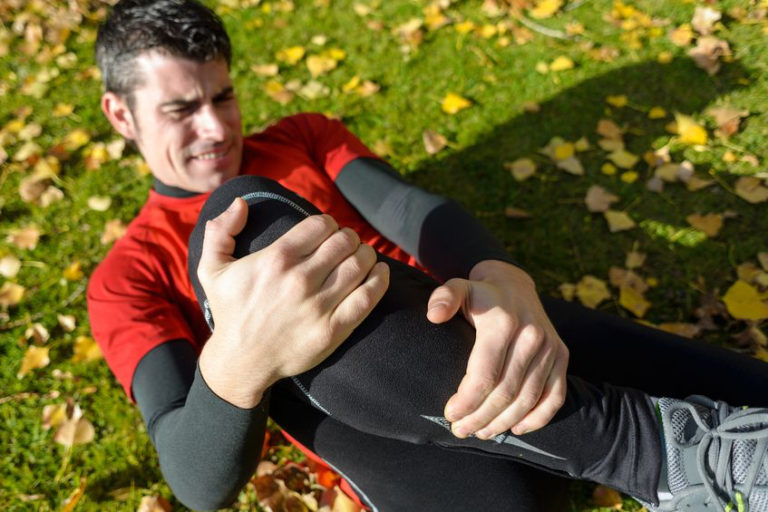Understanding Torn Meniscus Recovery

The meniscus is a C-shaped piece of cartilage that acts as a shock absorber in your knee. It helps to distribute weight evenly and prevent bone-on-bone friction. When the meniscus tears, it can cause pain, swelling, and instability in your knee. Understanding the types of tears and factors influencing recovery is crucial for effective treatment and a smooth recovery journey.
Types of Meniscus Tears
The severity of a meniscus tear can vary widely, and understanding the different types of tears is essential for determining the appropriate treatment plan.
- Horizontal Tear: This type of tear occurs across the width of the meniscus, resembling a horizontal cut. It is often associated with degenerative changes in the meniscus, typically affecting older individuals.
- Vertical Tear: This tear runs vertically along the length of the meniscus, resembling a lengthwise cut. It can be further categorized into different subtypes, such as radial, longitudinal, or flap tears, based on the specific tear pattern.
- Degenerative Tear: This tear is often caused by wear and tear over time, leading to thinning and fraying of the meniscus. It may be a result of aging, repetitive stress, or previous injuries.
- Bucket-Handle Tear: This type of tear is a more severe vertical tear where a large portion of the meniscus is displaced, resembling a bucket handle. It can cause significant pain and instability in the knee.
Factors Influencing Recovery Time
The recovery time for a torn meniscus can vary depending on several factors, including the type and severity of the tear, the age and overall health of the individual, and the chosen treatment approach.
- Type and Severity of Tear: A minor tear, such as a small horizontal tear, might heal naturally with conservative treatment. However, a more severe tear, like a bucket-handle tear, might require surgery to repair or remove the damaged portion.
- Age and Overall Health: Younger individuals with good overall health tend to recover faster from meniscus tears than older individuals with underlying health conditions. The body’s ability to heal and regenerate tissues plays a significant role in recovery time.
- Treatment Approach: The chosen treatment approach can significantly impact recovery time. Conservative treatment, such as rest, ice, compression, and elevation (RICE), typically involves a shorter recovery period than surgical intervention. Surgery can take several months for full recovery, depending on the complexity of the procedure.
Typical Recovery Time
The recovery time for a torn meniscus can range from a few weeks to several months, depending on the factors mentioned above. Here’s a general overview of typical recovery timeframes for different types of tears:
| Type of Tear | Typical Recovery Time |
|---|---|
| Minor tear (horizontal, small vertical) | 4-6 weeks (conservative treatment) |
| Moderate tear (larger vertical, flap tear) | 6-12 weeks (conservative treatment or surgery) |
| Severe tear (bucket-handle tear, complex tears) | 12-24 weeks (surgery) |
Note: These are just general estimates, and individual recovery times may vary. It is important to consult with a healthcare professional for a personalized assessment and treatment plan.
Treatment Options and Procedures

The road to recovery from a torn meniscus can vary depending on the severity of the tear and your individual circumstances. Fortunately, there are a variety of treatment options available, ranging from conservative approaches to surgical interventions. Let’s delve into the world of meniscus repair and see which path might be best for you.
Non-Surgical Treatment
Non-surgical treatment options are often the first line of defense for a torn meniscus, especially for less severe tears. The goal of these conservative approaches is to reduce pain, inflammation, and improve joint function.
The most common non-surgical treatment approach is RICE, which stands for:
- Rest: This means avoiding activities that put stress on the affected knee. Think of it as giving your knee a break to heal.
- Ice: Applying ice to the injured area helps to reduce swelling and pain. Think of it as a cold compress for your knee.
- Compression: Wrapping the knee with a bandage or brace helps to reduce swelling and provide support. Think of it as a hug for your knee.
- Elevation: Keeping your knee elevated above your heart helps to reduce swelling by promoting fluid drainage. Think of it as giving your knee a little lift.
In addition to RICE, your doctor may also recommend:
- Pain medication: Over-the-counter pain relievers like ibuprofen or naproxen can help manage pain and inflammation.
- Physical therapy: A physical therapist can help you strengthen the muscles around your knee and improve your range of motion.
- Bracing: Wearing a knee brace can provide support and stability to the joint, allowing you to gradually return to activities.
Surgical Treatment
If non-surgical treatment options are not successful, or if the tear is severe, surgery may be necessary. The two main surgical procedures for a torn meniscus are:
- Meniscus Repair: This procedure involves stitching the torn meniscus back together. This is typically performed for tears that are located in the outer portion of the meniscus, where there is a better blood supply for healing.
- Meniscectomy: This procedure involves removing the damaged portion of the meniscus. This is typically performed for tears that are located in the inner portion of the meniscus, where there is less blood supply for healing.
Advantages and Disadvantages of Treatment Options, Torn meniscus recovery time
| Treatment Option | Advantages | Disadvantages |
|---|---|---|
| Non-Surgical Treatment | Less invasive, fewer risks, often effective for less severe tears. | May not be effective for all tears, can be time-consuming, may not provide long-term relief. |
| Meniscus Repair | Preserves the meniscus, potentially improves long-term joint health, may be a better option for younger individuals. | More invasive, requires a longer recovery period, may not be successful for all tears. |
| Meniscectomy | Less invasive than repair, faster recovery time, may be a better option for older individuals or tears that are not repairable. | May increase the risk of osteoarthritis in the long term, may not provide long-term relief. |
“The best treatment option for a torn meniscus depends on the individual patient and the specific tear.”
Rehabilitation and Recovery Process: Torn Meniscus Recovery Time

Recovering from a torn meniscus involves a structured rehabilitation program that guides you back to full activity. This program is tailored to your individual needs and the severity of your injury. The goal is to restore strength, flexibility, and stability in your knee, enabling you to resume your desired activities safely.
Stages of Rehabilitation
Rehabilitation after a torn meniscus typically follows a progressive approach, divided into distinct stages. Each stage builds upon the previous one, gradually increasing the intensity and complexity of exercises and activities.
- Immediate Post-Surgery or Injury Stage (Days 1-7): This initial phase focuses on controlling pain and swelling. You’ll be encouraged to keep your leg elevated and apply ice to the injured area. Gentle range-of-motion exercises may be introduced to prevent stiffness.
- Early Rehabilitation Stage (Weeks 2-6): As pain and swelling subside, you’ll begin to strengthen your leg muscles and improve your range of motion. This stage often involves exercises like quadriceps and hamstring strengthening, ankle pumps, and gentle knee flexion and extension.
- Intermediate Rehabilitation Stage (Weeks 6-12): This stage focuses on regaining full range of motion, strengthening, and proprioception (body awareness). Exercises may include squats, lunges, and balance exercises.
- Advanced Rehabilitation Stage (Weeks 12-24+): In this final stage, you’ll focus on returning to your desired activities. This may involve sport-specific drills and progressive weight-bearing activities. The duration of this stage depends on your individual needs and the complexity of your return to activity.
Exercises and Activities
Here are some examples of exercises and activities you might perform during your rehabilitation:
Early Stage
- Ankle pumps: Sit with your leg extended and point your toes up and down. This helps to improve circulation and prevent ankle swelling.
- Quadriceps sets: Lie on your back with your leg extended. Tighten your thigh muscles and hold for a few seconds, then relax. This helps to strengthen your quadriceps muscle.
- Hamstring curls: Lie on your stomach with your feet hanging off the edge of the bed. Bend your knee and lift your heel towards your buttocks. This helps to strengthen your hamstring muscles.
- Straight leg raises: Lie on your back with your leg extended. Slowly raise your leg a few inches off the bed, hold for a few seconds, and then lower it back down. This helps to strengthen your hip flexors.
- Knee flexion and extension: Sit with your leg extended. Slowly bend your knee as far as you can without pain, then straighten it back out. This helps to improve your range of motion.
Intermediate Stage
- Squats: Stand with your feet shoulder-width apart and slowly lower your body as if you were sitting in a chair. Keep your back straight and your knees in line with your toes.
- Lunges: Stand with your feet hip-width apart. Step forward with one leg and lower your body until your front knee is bent at a 90-degree angle. Keep your back straight and your front knee in line with your toes.
- Calf raises: Stand with your feet hip-width apart and raise up onto your toes. Hold for a few seconds, then lower back down. This helps to strengthen your calf muscles.
- Balance exercises: Stand on one leg and try to maintain your balance. You can progress to more challenging exercises by closing your eyes or standing on an unstable surface.
Advanced Stage
- Sport-specific drills: This stage may involve drills that simulate the movements you’ll need to perform in your chosen sport. For example, if you’re a runner, you might practice jogging and sprinting.
- Progressive weight-bearing activities: This stage may involve activities that gradually increase the amount of weight you’re putting on your injured knee. For example, you might start by walking short distances and gradually increase the distance and intensity of your walks.
Recovery Milestones and Potential Complications
Here’s a table outlining the expected recovery milestones and potential complications associated with a torn meniscus:
| Milestone | Expected Timeframe | Potential Complications |
|---|---|---|
| Pain and swelling subside | 1-2 weeks | Infection, delayed healing, blood clots |
| Full range of motion restored | 4-6 weeks | Stiffness, limited mobility |
| Return to light activities | 6-8 weeks | Re-injury, pain |
| Return to moderate activities | 8-12 weeks | Re-injury, pain |
| Return to full activity | 12-24 weeks+ | Re-injury, chronic pain |
Remember, every individual’s recovery journey is unique. It’s essential to work closely with your physical therapist and follow their instructions to ensure a successful rehabilitation process.
Torn meniscus recovery time? It’s like waiting for a sloth to finish a marathon… except way more painful. It all depends on the severity of the tear, but a good rule of thumb is to expect a few weeks of rest and rehab.
You’ll be doing a lot of RICE (rest, ice, compression, elevation) and maybe some physical therapy. If you’re lucky, you might be able to avoid surgery. But if your meniscus is completely shredded, you’ll need to get it fixed.
You can learn more about torn meniscus and what it means for your recovery. Just remember, patience is key. Your knee will thank you in the long run!
Torn your meniscus? Don’t worry, you’ll be back on your feet in no time! Just remember, recovery time is longer than the attention span of a squirrel. Speaking of attention spans, check out the vikings depth chart – you’ll be so distracted by the endless list of backups you’ll forget about your knee pain.
So, grab a bag of ice, some Netflix, and get ready to be a couch potato for a while – you’ll be back to tackling like a Viking in no time!
